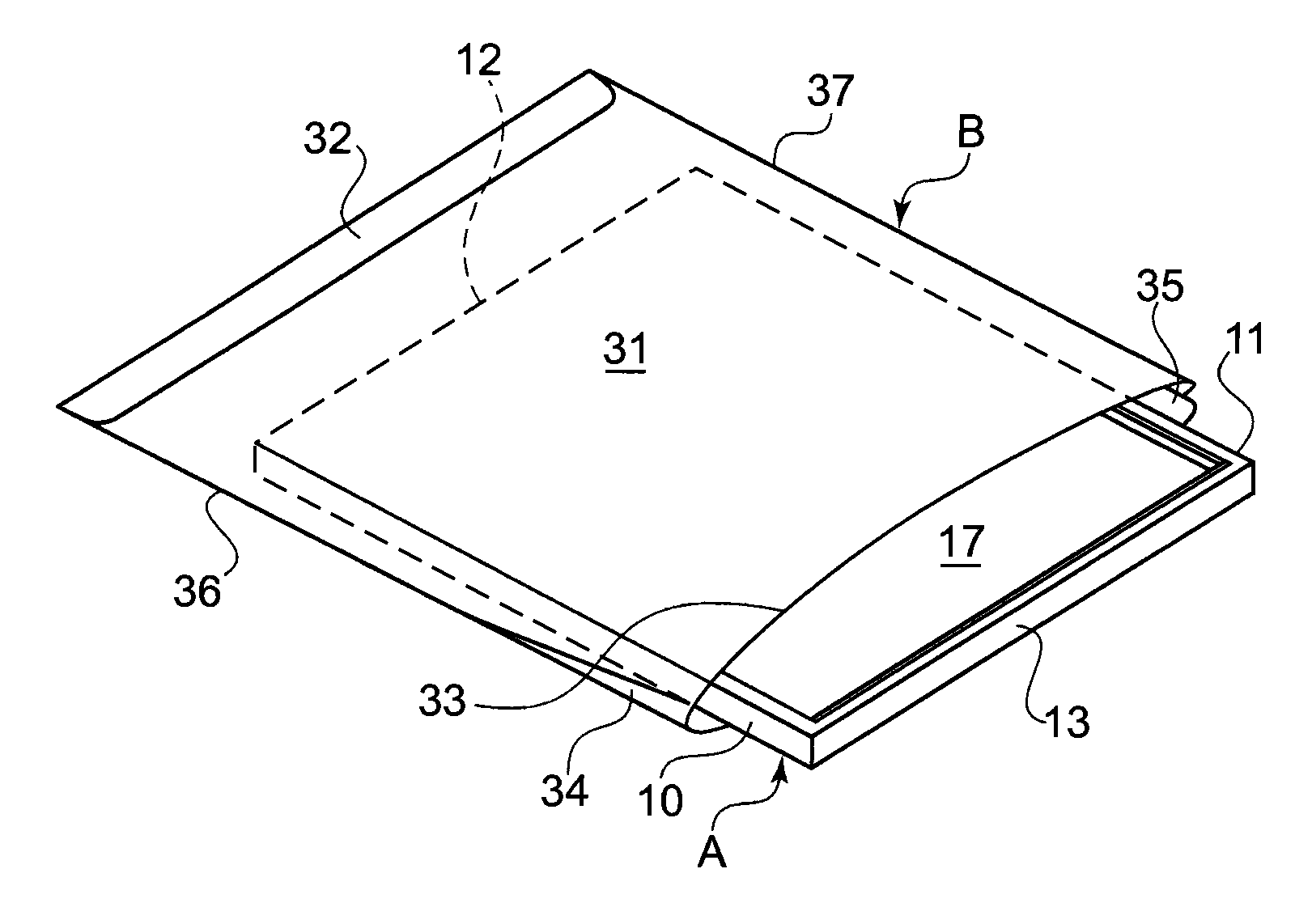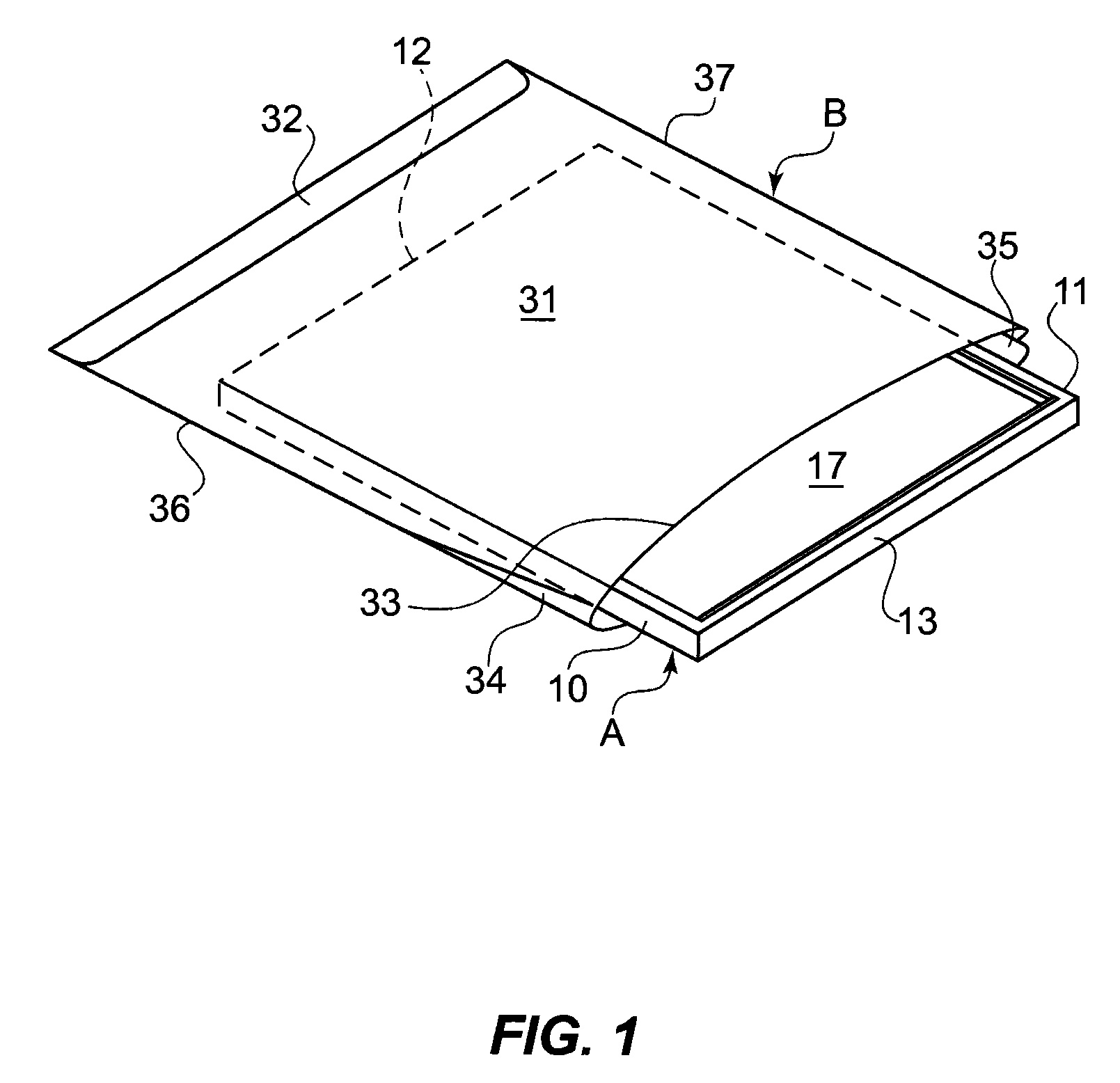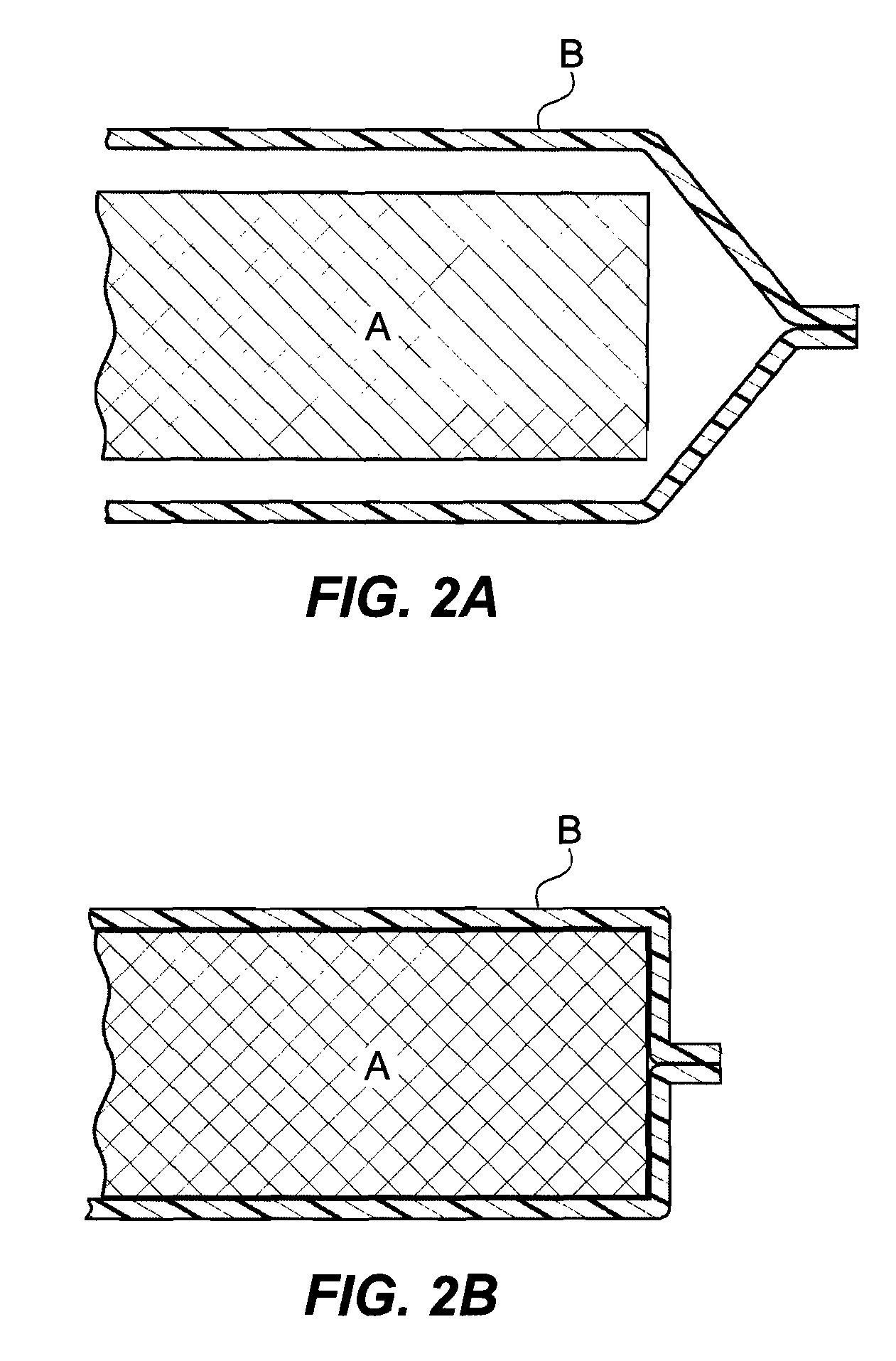Heat-shrinkable anti-fomitic device incorporating anti-microbial metal
a technology of anti-microbial metal and heat-shrinkable, which is applied in the direction of rigid containers, synthetic resin layered products, packaging, etc., can solve the problems of ” being infected by reverse wicking, particularly problematic, and compromising the immune system, so as to prevent future cross infection, reduce pathogens, and be convenient to us
- Summary
- Abstract
- Description
- Claims
- Application Information
AI Technical Summary
Benefits of technology
Problems solved by technology
Method used
Image
Examples
Embodiment Construction
[0028]Disclosed embodiments relate generally to an anti-microbial cover or barrier formed of shrink film material to prevent cross-infection. In particular, embodiments relate to a range of anti-microbial anti-fomitic covers to both prevent cross-infection and disinfect surfaces, including such covers for pillows, mattresses, surgical and diagnostic equipment, toilet seats, table and chair seat surfaces, wash basin faucet handles and other handles, etc. through a combination of the barrier and incorporation of an anti-microbial metal.
[0029]The series of embodiments disclosed achieve a variety of results and applications. As used herein, the term anti-microbial refers to the properties of being anti-bacterial, anti-fungal, and anti-viral.
[0030]In the following detailed descriptions, a flat object to be covered will be designated generally as A, and the cover therefore will be designated generally as B. In general, however, object A need not be flat. A can be virtually any item or par...
PUM
| Property | Measurement | Unit |
|---|---|---|
| heat-shrinkable | aaaaa | aaaaa |
| heat-shrink | aaaaa | aaaaa |
| heat- | aaaaa | aaaaa |
Abstract
Description
Claims
Application Information
 Login to View More
Login to View More - R&D
- Intellectual Property
- Life Sciences
- Materials
- Tech Scout
- Unparalleled Data Quality
- Higher Quality Content
- 60% Fewer Hallucinations
Browse by: Latest US Patents, China's latest patents, Technical Efficacy Thesaurus, Application Domain, Technology Topic, Popular Technical Reports.
© 2025 PatSnap. All rights reserved.Legal|Privacy policy|Modern Slavery Act Transparency Statement|Sitemap|About US| Contact US: help@patsnap.com



